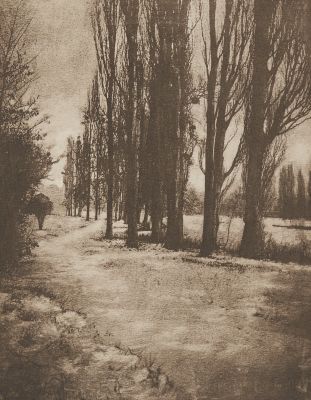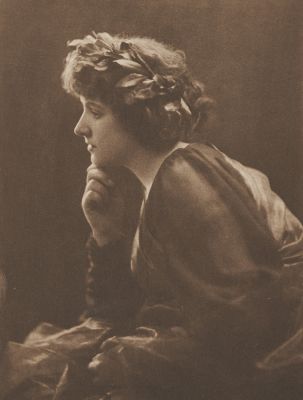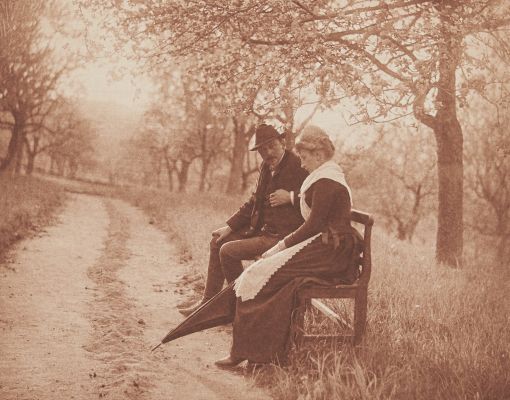
Title
PrimaveraArtist
Demachy, Robert (French, 1859-1936)Publication
Wiener Photographische Blätter : 1896Date
1896Process
PhotogravureAtelier
J. BlechingerImage Size
16.5 x 13 cm
Beginning in 1894, the Vienna Camera Club (Wiener Camera-Klub) began publishing a luxurious periodical titled, Wiener Photographische Blätter. The club was founded in 1861 and was the first of the amateur societies in a German country and by the early 1890s was intent upon establishing itself as the leader of a growing pictorial movement in Eastern Europe. To this end, it provided a showcase for its work by issuing Wiener Photographische Blätter which survived for five years: 1894-1898. The journal devoted itself especially to the artistic side of photography and was notable for its beautiful illustrations. In America, Alfred Stieglitz was intrigued with the journal’s publication. Contemporary writer Weston Naef writes: “In January the first issue of the Wiener Photographische Blätter appeared… with seventeen original photogravures by Hugo Henneberg, Hans Watzek, F. Mallman, J. S. Bergheim, and Adolph Meyer. Each gravure was printed with an ink of a different tone, and some like Meyer’s were mounted on colored paper, making this among the most carefully produced photography periodicals published anywhere in the world.” Naef’s reference to the journal’s issuance of 17 original photogravures for the January issue would most likely need to be amended however, as the entire year of 1894 featured a total of 21 photogravures, (16 being chine-collé gravures) two collotypes and a gelatino-chloride print of three stereoscopic views by Eduard Marauf. For the first year the majority of the copper plates for the photogravures were etched and impressions hand-pulled by Viennese copperplate engraver J.Blechinger, the son-in-law of Victor Angerer. Alfred Stieglitz would have been suitably impressed by their quality. In addition to having his own work published in later issues, the journal would influence his own business venture with photogravure and more profoundly, as a standard to emulate when he issued photogravure plates as editor of Camera Notes and later his own journal Camera Work (1903-1917). [1]
Looking like a cross between a watercolor and a chalk drawing, Demachy’s Study in Red reveals both technical skill and artistic intent. Demachy utilized the gum-bichromate process for the original image, which allowed him to remove by hand all background detail and introduce a swirling fluid foreground. Printed in brilliant conte-crayon color, the image celebrates the beauty of the female subject as well as the richness of both the gum-bichromate and the photogravure process. [2]
Reproduced / Exhibited
Gernsheim, Helmut. Creative Photography. Aesthetic Trends 1839-1960. [with Illustrations.]. London: Faber & Faber, 1962. p. 125
References
[1] photoseed.com. https://photoseed.com/collection/group/wiener-photographische-bltter-1894/ cited 02/20/23
[2] Peterson Christian A et al. Alfred Stieglitz’s Camera Notes. 1st ed. Published by the Minneapolis Institute of Arts in Association with W.W. Norton 1993.
Josef Maria Eder: History of Photography: Translated by Edward Epstean: Columbia University Press: New York: 1945
Manon Hübscher: The Vienna Camera Club-Catalyst and Crucible: in: Impressionist Camera: Pictorial Photography in Europe, 1888-1918 : Merrell Publishers : 2006 : p.125
The Collection of Alfred Stieglitz: Fifty Pioneers of Modern Photography: Weston J. Naef: The Metropolitan Museum of Art: 1978











